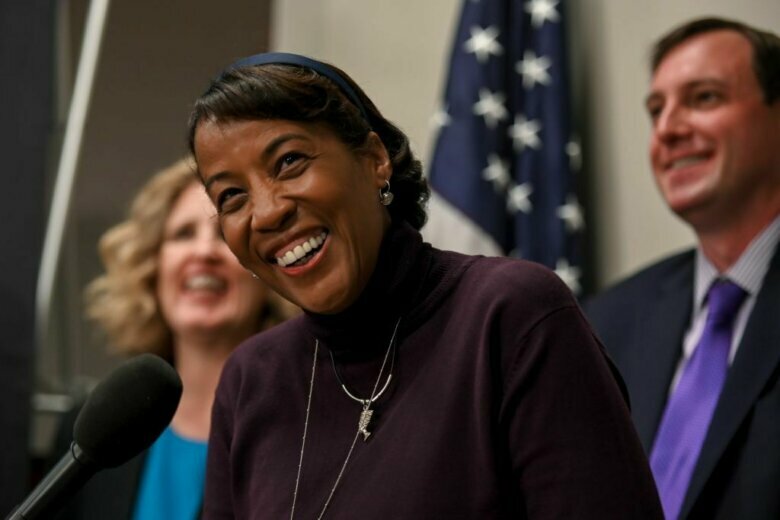
While 2020 was a difficult and remarkable year, in her annual state of the county address, Loudoun County Board of Supervisors Chair Phyllis Randall asked residents to consider what they want the Virginia county to become.
Loudoun County, Virginia, is the highest-income county by median household income in the United States. In 2010 U.S. Census data, Loudoun’s median household income was $115,574.
Randall, the first Black woman to chair a county board in Virginia, used her fifth state of the county address recent issues and challenges, and raise the question of what comes next.
Randall said the pandemic won’t be the only thing future historians teach. “The murders of George Floyd, Breonna Taylor and Ahmaud Arbery were, for many people, a tipping point.”
“In 2020, a long overdue reckoning on racial injustice swept the country even faster than the COVID pandemic,” Randall said.
While equity marches were plentiful in the county, affordable housing wasn’t.
“A few weeks ago, the board received the draft of the long-awaited Unmet Housing Needs Strategic Plan,” said Randall. “Unfortunately, the results confirmed some of our worst fears.”
“Like the nation, Loudoun has a dearth of attainable housing options,” Randall said. “Loudoun only has a 12-day supply of available housing stock.”
With Metro’s Silver Line coming to Loudoun County, Randall told her constituents, “Over the coming months, we have decisions to make.”
“How many new neighbors can we welcome to Loudoun, and where will those homes be located,” asked Randall. “How do we build infrastructure in advance of, or in conjunction with new houses.”
Randall said she wondered whether Loudoun County wants to be home to economically diverse populations.
“Is it important to us to be a county that welcomes new college graduates, and new retirees? And very importantly, what is the connection between attainable housing and a strong economy?”
Although in April of 2020, the county’s unemployment rate hit a COVID high of 9.9%, the rate is 3.9% now.
“Put another way, our unemployment rate is only about one point higher than before the pandemic,” Randall said.









